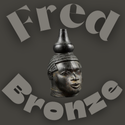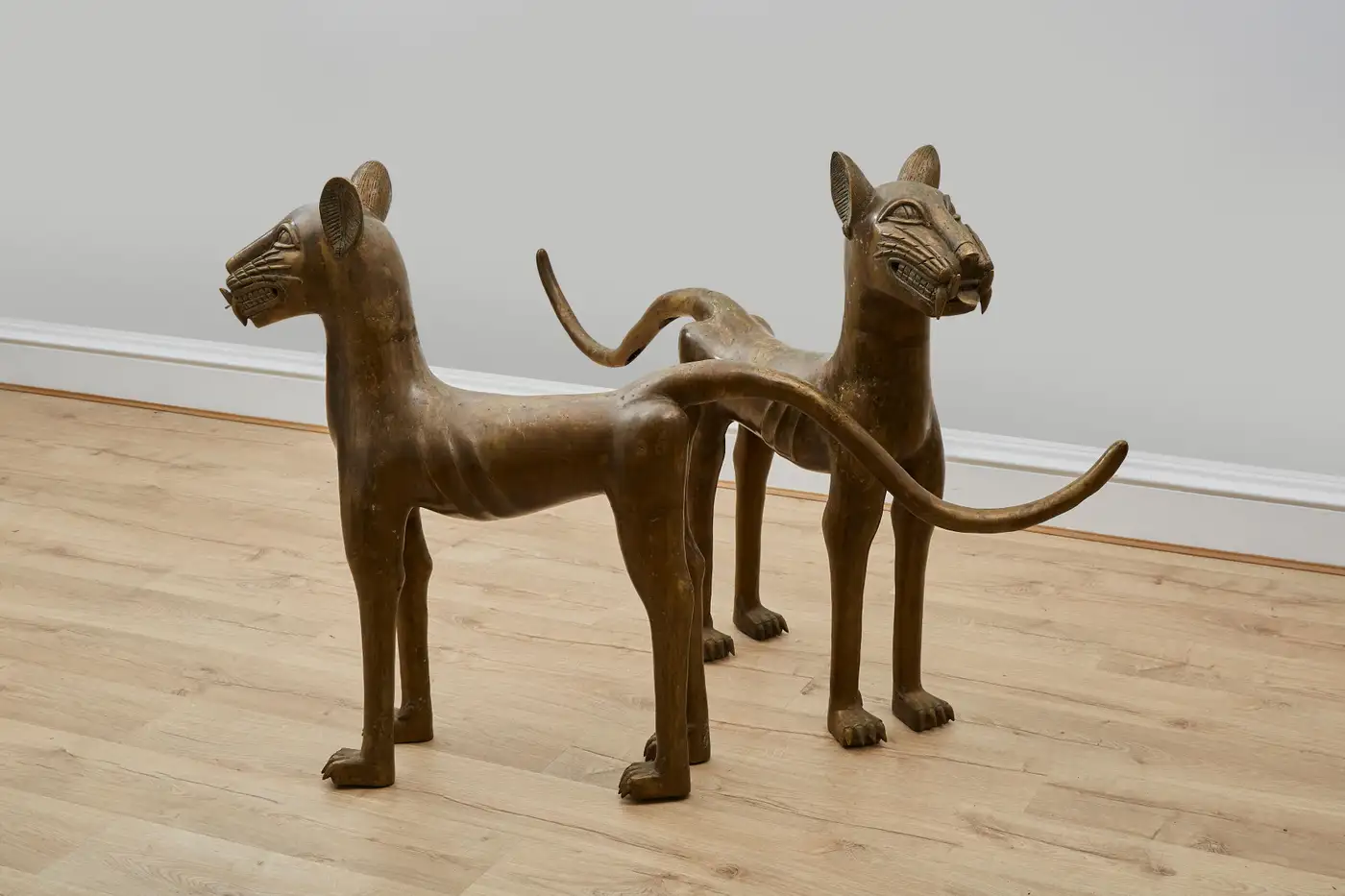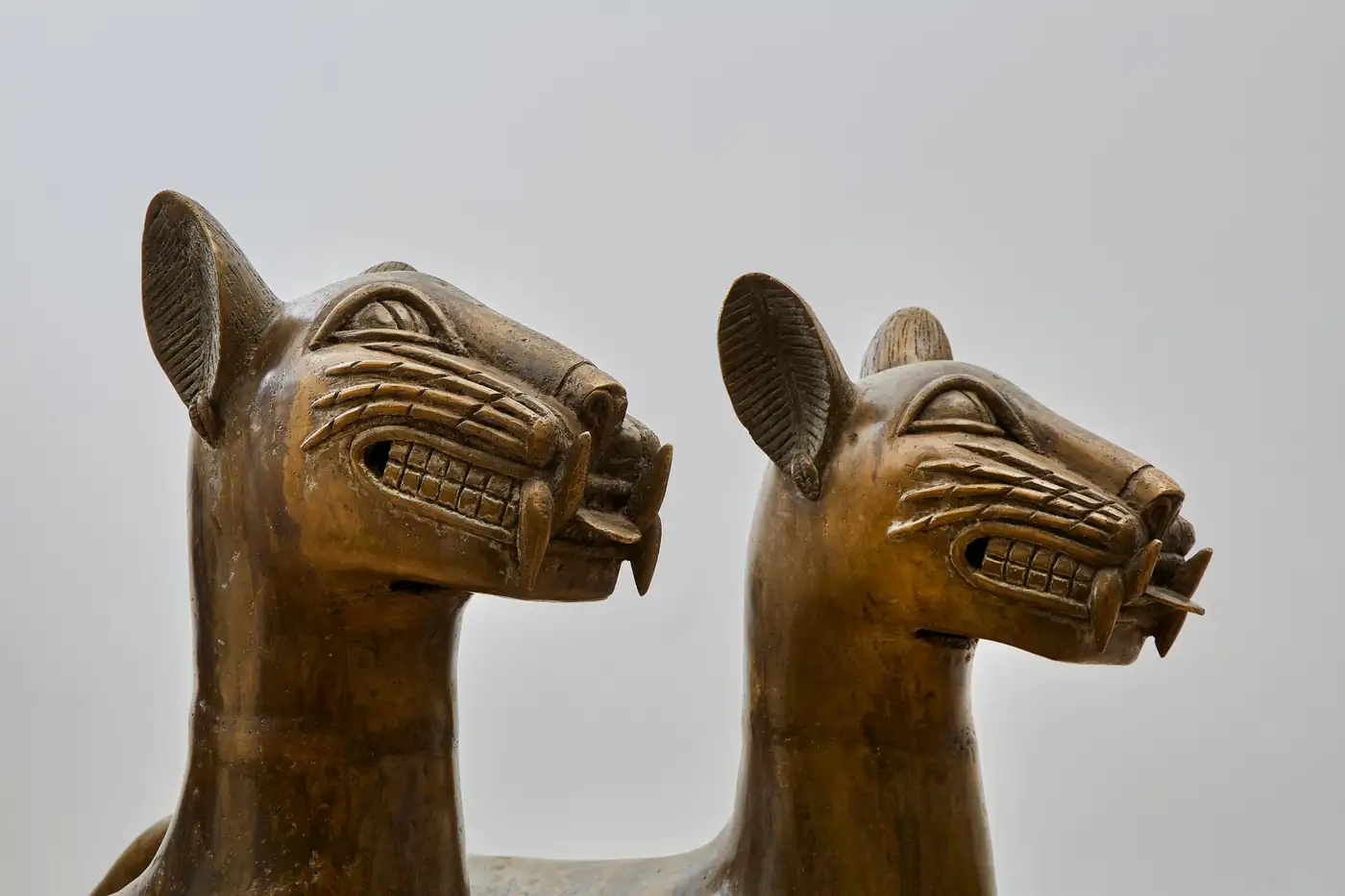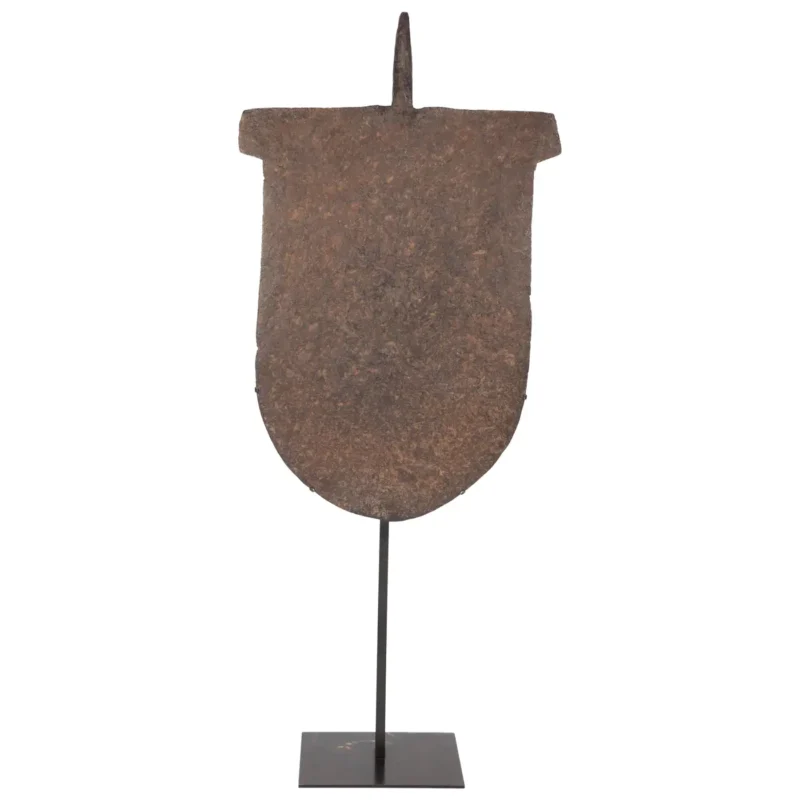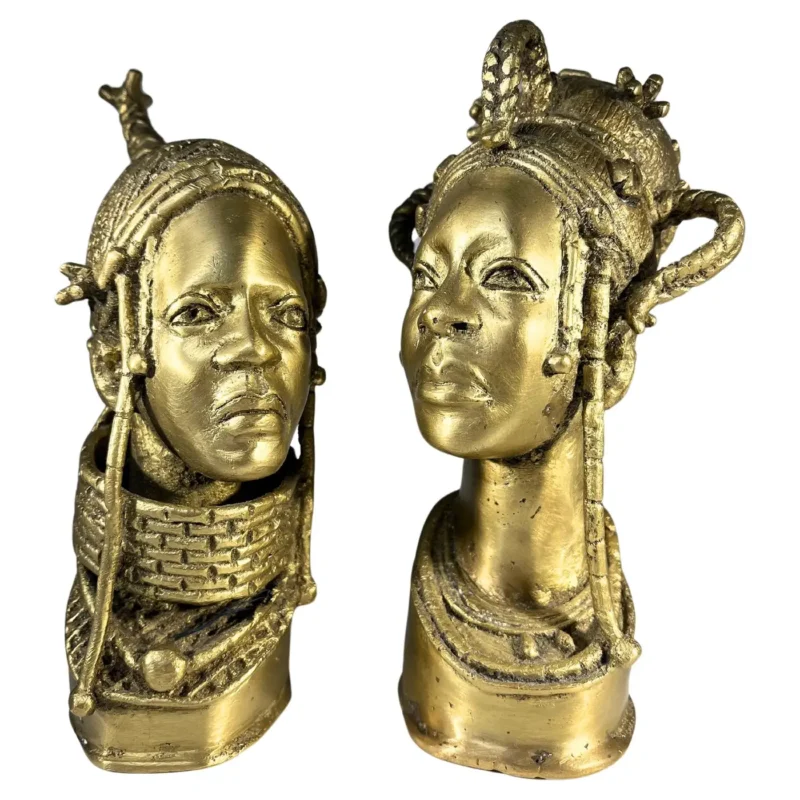Pair of Benin Bronze Large Leopard Statues
$2,300
-
Dimensions: Height: 37.01 in (94 cm)Width: 123.63 in (314 cm)Depth: 7.88 in (20 cm)
-
Sold As: Set of 2
-
Style: Tribal (Of the Period)
-
Materials and Techniques: Bronze,Cast
-
Place of Origin: Benin
-
Date of Manufacture: 1980s
-
Condition:
Excellent
-
Reference Number:FB1987236332572
Description
Pair of Benin Bronze Large Leopard Statues, Year 1997
This pair of casted, stylized, mid-20th-century-style bronze leopards are vintage copies of Benin (modern-day Nigeria) bronze figural sculptures of leopards. These large and impressive pair of leopards make a strong decorative statement; they feature a fine quality of detail and a beautiful aged patina. Dimensions: Height: 94 cm Length: 134 cm Width: 20 cm The original Benin bronzes are a group of more than a thousand metal plaques and sculptures that decorated the royal palace of the Kingdom of Benin in what is now modern-day Nigeria. Collectively, the objects form the best-known examples of Benin art, created from the thirteenth century onwards by the Edo people, which also included other sculptures in brass or bronze, including some famous portrait heads and smaller pieces. Leopards were considered to be “kings of the forest,” and they represented regal power and supremacy.
